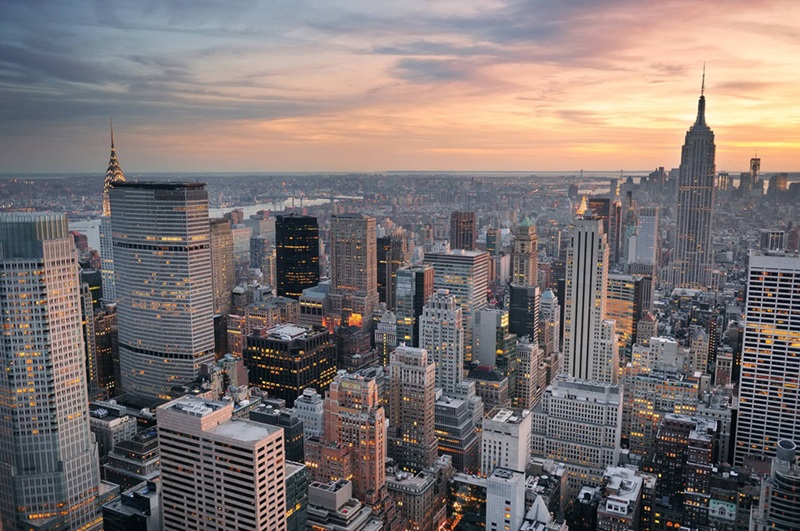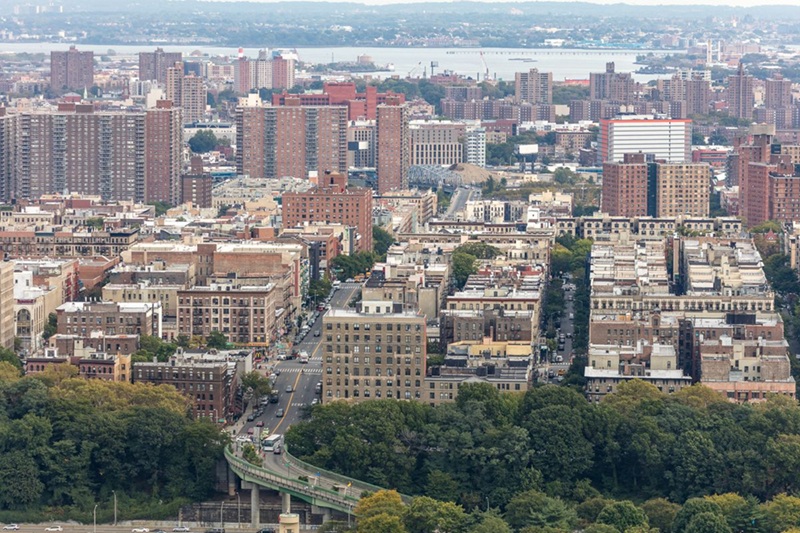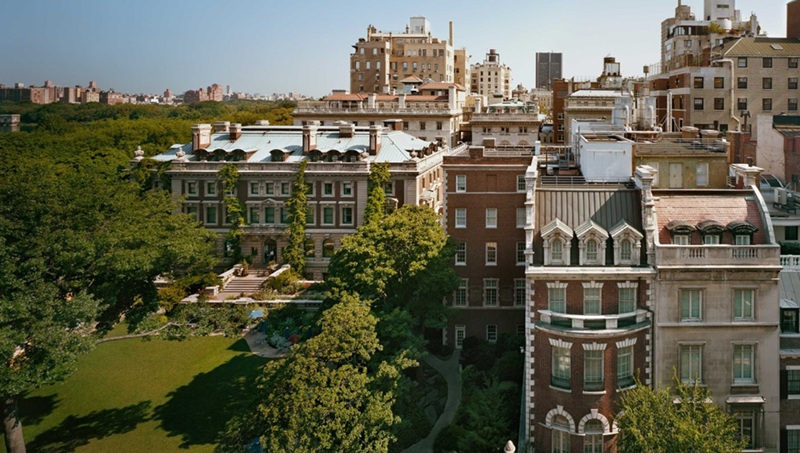
Midtown Manhattan is the vibrant, bustling center of New York City, often regarded as the city’s commercial and cultural hub. Spanning from 34th Street to 59th Street, and stretching west from the East River to the Hudson River, Midtown is where skyscrapers dominate the skyline, and iconic landmarks are within walking distance. From towering office buildings to world-class theaters, world-famous shopping destinations, and vibrant public spaces, Midtown encapsulates the energy, diversity, and ambition that define New York City.
A Snapshot of Midtown’s History
Midtown Manhattan‘s transformation into the city’s commercial epicenter began in the late 19th and early 20th centuries. The development of the elevated railroads and the construction of the iconic Grand Central Terminal in 1913 helped solidify Midtown’s role as a transportation and business hub. By the 1920s, the area had already become synonymous with the world’s financial and business centers, leading to the construction of some of the world’s tallest and most recognizable skyscrapers.
The district grew even more prominent during the 20th century, particularly after the completion of the Empire State Building in 1931. Throughout the 1950s and 1960s, Midtown continued to expand, becoming home to major corporate headquarters, luxury hotels, and cultural institutions. Today, Midtown is still a vibrant commercial and cultural district, housing the offices of Fortune 500 companies, global financial firms, and a broad range of entertainment venues.
Iconic Landmarks
Midtown Manhattan is home to some of the world’s most iconic landmarks, which are integral to the neighborhood’s identity.
- Times Square: Known as “The Cross-roads of the World,” Times Square is one of the most recognizable locations in the world. Famous for its neon lights, large digital billboards, and 24/7 energy, Times Square is a cultural and entertainment epicenter. Visitors flock to Times Square to experience Broadway shows, dine at top restaurants, and attend events like the annual New Year’s Eve ball drop.
- Empire State Building: Once the tallest building in the world, the Empire State Building remains an enduring symbol of New York. Its Art Deco design and observation decks offer sweeping views of the city skyline. It is one of the most photographed buildings in the world and remains a must-see attraction for visitors.
- Rockefeller Center: The Rockefeller Center complex is a city landmark, known for its seasonal ice skating rink and Christmas tree, as well as its association with the NBC studios. The complex is also home to the famous Top of the Rock observation deck, which offers unparalleled views of the city, including a clear view of the Empire State Building.
- Grand Central Terminal: A marvel of Beaux-Arts architecture, Grand Central Terminal serves as a transportation hub and an architectural treasure. Its celestial dome, grand staircase, and beautiful murals make it a popular tourist destination. In addition to its beauty, Grand Central is a working train station, connecting commuters to the suburbs of New York City.
- Broadway: Midtown is home to the famous Broadway theater district, where world-class performances are staged year-round. From long-running shows like The Phantom of the Opera to newer hits, Broadway is the beating heart of American theater.
Business and Financial Powerhouse
Midtown Manhattan is a global business hub, with a concentration of office buildings that house the headquarters of many major corporations, including in finance, media, technology, and law. The World Trade Center, located in Lower Manhattan, may be home to the city’s financial core, but Midtown serves as the backdrop for many of the city’s largest industries.
The neighborhood is also home to the New York Public Library, located on Fifth Avenue, which is a key institution for research and education. Midtown’s proximity to Wall Street and the United Nations Headquarters, located on the East River near the southern border of Midtown, further cements its significance as a business and political center.
Shopping and Dining
Midtown Manhattan is a shopping mecca, offering a mix of luxury retailers, flagship stores, and unique boutiques. Fifth Avenue, one of the world’s most famous shopping streets, runs through Midtown and is home to iconic stores such as Tiffany & Co., Saks Fifth Avenue, and Apple. Whether you’re looking for high-end fashion, cutting-edge electronics, or one-of-a-kind items, Midtown’s retail options cater to a wide range of tastes and budgets.
For dining, Midtown offers a diverse selection of restaurants, ranging from casual eateries to Michelin-starred fine dining. Restaurant Row, located on West 46th Street, features an array of dining options, including international cuisine and pre-theater meals. Whether you’re enjoying a world-class steak at Keens Steakhouse or sampling modern American fare at The Modern (located within the Museum of Modern Art), Midtown’s food scene is second to none.
Public Spaces and Recreation
Amid the towering skyscrapers and fast-paced commercial activities, Midtown also offers a number of parks and green spaces. Bryant Park, located between 5th and 6th Avenues, is an urban oasis with outdoor seating, seasonal ice skating, and free cultural events such as concerts and movie nights. Central Park, located at the northern edge of Midtown, offers expansive lawns, peaceful lakes, and walking trails, providing a calm escape from the hustle and bustle of the city.
Additionally, Hudson Yards, a newer development located along the western edge of Midtown, offers public spaces like the Vessel, a stunning interactive art installation, and The Shed, a contemporary arts center that showcases cutting-edge performances and exhibitions.
Midtown as a Residential Neighborhood
While Midtown is primarily known for its commercial and entertainment offerings, it also boasts a variety of residential options. Luxury condominiums, historic brownstones, and modern apartment buildings are nestled throughout the area, providing residents with access to some of the best dining, shopping, and entertainment in the city. Midtown’s central location offers easy access to other parts of the city via the extensive subway system, making it an attractive option for those who want to live in the heart of New York.
Conclusion
Midtown Manhattan is the epitome of New York City’s energy, diversity, and ambition. It is a neighborhood where the commercial and cultural worlds collide, creating a dynamic atmosphere that attracts millions of visitors each year. Whether you’re exploring world-renowned landmarks, catching a Broadway show, or enjoying a meal at a top-tier restaurant, Midtown offers an experience that is quintessentially New York. With its towering skyscrapers, bustling streets, and rich cultural heritage, Midtown Manhattan remains the heartbeat of New York City.

